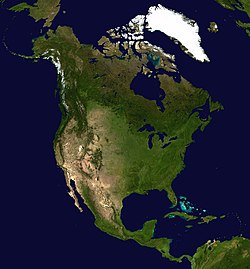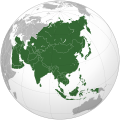| Language or dialect name | Language family | Extinction date | Notes | References |
|---|
| Achumawi | Palaihnihan | 2013 | Revival attempts underway | |
| Adai | unclassified | 19th century | | |
| Ais | unclassified | 18th century | | |
| Carolina Algonquian/Pamlico/Croatoan | Algic | 1790s | | |
| Alsea/Yaquina | Language isolate | 1942 | Alsea and Yaquina are thought to be either two related languages or two dialects of the same language | |
| Apalachee | Muskogean | 18th century | Revival attempts underway | |
| Aranama | unclassified | 19th century | | |
| Atakapa | Language isolate | 20th century | | |
| Atsina/Gros Ventre | Algic | 2007 | Revival attempts underway | |
| Atsugewi | Palaihnihan | 1988 | | |
| Awaswas | Utian | 19th century | formerly known as "Santa Cruz" | |
| Barbareño/Šmuwič | Chumashan | 1965 | Revival attempts underway. Barbareño and Ineseño may be related dialects of the same language or closely related languages | |
| Bidai | unclassified | 19th century | | |
| Biloxi | Siouan | 1930s | | |
| Caddo/Hasí꞉nay | Caddoan | 14 July 2025 | Revival attempts underway | [5] |
| Cahto/Kato | Na-Dene | 1960s | | |
| Calusa | unclassified | 19th century | | |
| Catawba | Siouan | 1959 | Revival attempts underway | |
| Cayuse | Language isolate | 1930s | | |
| Chalon | Utian | 19th century | | |
| Upper Chehalis | Salishan | 2001 | Revival attempts underway | |
| Lower Chehalis | Salishan | 1990s | | |
| Chemakum/Chimakum/Chimacum | Chimakuan | 19th century | |
| Chico/Valley Maidu | Maiduan | 21st century | | |
| Chimariko | Language isolate | 1950s | | |
| Chitimacha/Sitimaxa | Language isolate | 1940 | Revival attempts underway | |
| Chiwere/Iowa-Otoe-Missouria/Báxoje-Jíwere-Ñút'achi | Siouan | 1996 | Revival attempts underway | |
| Chochenyo | Utian | 1934 | Revival attempts underway | |
| Coahuilteco | Language isolate | 18th century | | |
| Columbia-Moses | Salishan | 2 May 2023 | Revival attempts underway | [6] |
| Cowlitz | Salishan | 20th century | Revival attempts underway | |
| Cupeño | Uto-Aztecan | 1987 | | |
| Esselen | Language isolate | 19th century | | |
| Erie | Iroquoian | 17th century | | |
| Etchemin | Algic | 17th century | | |
| Eyak | Na-Dene | 2008 | Revival attempts underway | |
| Galice/Galice-Applegate/Upper Rogue River | Na-Dene | 1963 | | |
| Halchidhoma/Xalychidom | Yuman–Cochimí | (date missing) | | |
| Hanis/Coos | Coosan | 1972 | | |
| Holikachuk | Na-Dene | 2012 | | |
| Houma | Muskogean | after 1907 | Revival attempts underway | |
| Ineseño/Sʰamala | Chumashan | 1965 | Revival attempts underway. Barbareño and Ineseño may be related dialects of the same language or closely related languages | |
| Island Chumash/Isleño/Cruzeño | Chumashan | 1915 | | |
| Central Kalapuya | Kalapuyan | 1954 | | |
| Kansa | Siouan | 1982 | | |
| Karankawa | unclassified | 1858 | | |
| Karkin | Utian | 1950s | | |
| Kathlamet | Chinookan | 1930s | | |
| Kiksht/Upper Chinook/Columbia Chinook/Wasco-Wishram | Chinookan | 2012 | | |
| Kitanemuk | Uto-Aztecan | 1940s | | |
| Kitsai | Caddoan | 1940 | | |
| Klallam/Clallam/Ns'Klallam/S'klallam | Salishan | 2014 | Revival attempts underway | |
| Klamath/Klamath–Modoc/Lutuamian | Plateau Penutian | 2003 | Revival attempts underway | |
| Konomihu | Shastan | 1940s | | |
| Kwalhioqua-Clatskanie | Na-Dene | 20th century | | |
| Loup | Algic | 18th century | May have been 5 different languages | |
| Lower Chinook | Chinookan | 1930s | | |
| Luiseño | Uto-Aztecan | 2010s | | |
| Lushootseed | Salishan | 2008 | Revival attempts underway | |
| Maidu | Maiduan | 2007 | Revival attempts underway | |
| Makah | Wakashan | 2002 | Revival attempts underway | |
| Mandan | Siouan | 2016 | Revival attempts underway | |
| Massachusett/Natick/Wôpanâak/Pokanoket/Nonantum/Indian | Algic | 19th century | Revival attempts underway. As of 2014, 5 children are native speakers, 15 are proficient second-language speakers and 500 are adult second-language learners. [7] [8] | |
| Mattole/Mattole-Bear River | Na-Dene | 1930s | | |
| Miami-Illinois | Algic | 20th century | Revival attempts underway | |
| Miluk/ Lower Coquille | Coosan | 1939 | | |
| Mitchigamea | Siouan | 18th century | | |
| Bay Miwok | Utian | (date missing) | | |
| Coast Miwok | Utian | 1970 | | |
| Lake Miwok | Utian | 1990s | | |
| Northern Sierra Miwok | Utian | 1990s | | |
| Plains Miwok | Utian | 1990s | | |
| Mohican/Mahican | Algic | 1940s | Revival attempts underway | |
| Mohegan-Pequot/Mohegan-Pequot-Montauk/Secatogue/Shinnecock-Poosepatuck | Algic | 1908 | Revival attempts underway | |
| Molala | Plateau Penutian | 1958 | | |
| Mutsun | Utian | 1930 | Revival attempts underway | |
| Nanticoke/Piscataway | Algic | 1840s | Revival attempts underway. Nanticoke and Piscataway may be related dialects of the same language or closely related languages | |
| Nansemond | unclassified | before 20th century | May have been Algic | |
| Narragansett | Algic | 18th–19th century | | |
| Natchez | Language isolate | 1957 | Revival attempts underway | |
| Nawathinehena | Algic | 19th century | | |
| Nicoleño | Uto-Aztecan | 1853 | | |
| Nisenan | Maiduan | 2000s | Revival attempts underway | |
| Nooksack | Salishan | 1988 | Revival attempts underway | |
| Nomlaki | Wintuan | 20th century | | |
| Northern Kalapuyan | Kalapuyan | 1937 | | |
| Nottoway/Cheroenhaka | Iroquoian | 1838 | Revival attempts underway | |
| Obispeño/tiłhini | Chumashan | 1917 | | |
| Ofo | Siouan | 20th century | | |
| Okwanuchu | Shastan | 20th century | | |
| Osage | Siouan | 3 November 2005 | As of 2009, 15–20 2L speakers and ongoing revival | [9] [10] |
| Pamunkey | unclassified | before 20th century | May have been Algic | |
| Piro Pueblo | Tanoan | 1900 | | |
| Plains Apache | Na-Dene | 2008 | | |
| Lipan Apache | Na-Dene | early 21st century | Presumely | |
| Central Pomo | Pomoan | before 2000 | | |
| Eastern Pomo/Clear Lake Pomo | Pomoan | 2007 | Revival attempts underway | |
| Northern Pomo | Pomoan | 2005 | Revival attempts underway | |
| Northeastern Pomo | Pomoan | 1961 | | |
| Southern Pomo | Pomoan | 2014 | Revival attempts underway | |
| Powhatan/Virginia Algonquian | Algic | 18th century | | |
| Purisimeño | Chumashan | early 20th century | | |
| Quapaw | Siouan | 19 April 2022 | | [11] |
| Quileute | Chimakuan | 1999 | | |
| Quinault | Salishan | 1996 | Revival attempts underway | |
| Quiripi/Mattabesic/Quiripi-Unquachog/Quiripi-Naugatuck/Wampano | Algic | 20th century | | |
| Ramaytush | Utian | 1915 | | |
| Rumsen/Rumsien/San Carlos Costanoan/Carmeleno | Utian | 1939 | | |
| Salinan | Language isolate | 1958 | | |
| Scahentoarrhonon | Iroquoian | approx. 1652 | | |
| Serrano | Uto-Aztecan | 2002 | Revival attempts underway | |
| Shasta | Shastan | 20th century | | |
| New River Shasta | Shastan | 1926 | | |
| Siuslaw | Language isolate | 1960 | | |
| Southern Patwin | Wintuan | (date missing) | | |
| Susquehannock/Conestoga | Iroquoian | 18th century | | |
| Taensa | Language isolate | late 19th century | Probably Natchez dialect. | |
| Takelma | Language isolate | 1934 | | |
| Tamien | Utian | (date missing) | | |
| Tataviam | Uto-Aztecan | 1916 | | |
| Tawasa | Language isolate | 18th century | Possibly Timucuan dialect. | |
| Tillamook | Salishan | 1972 | | |
| Timucua | Language isolate | 18th century | | |
| Tongva/Gabrielino/Gabrieleño | Uto-Aztecan | 20th century | Revival attempts underway | |
| Tonkawa | Language isolate | 1940s | | |
| Tübatulabal | Uto-Aztecan | 2008 | Revival attempts underway [12] | |
| Tunica/Luhchi Yoroni/Tonica/Yuron | Language isolate | 1948 | Revival attempts underway | |
| Tuscarora | Iroquoian | 2020 | | |
| Tutelo/Tutelo–Saponi | Siouan | 1982 | | |
| Tututni/(Lower) Rogue River/Upper Coquille/Nuu-wee-ya | Na-Dene | 1983 | Revival attempts underway | |
| Twana/Skokomish | Salishan | 1980 | | |
| Upper Umpqua | Na-Dene | 1950s | | |
| Unami | Algic | 2002 | | |
| Ventureño/Mitsqanaqa'n | Chumashan | 20th century | | |
| Wailaki/Eel River Athabaskan | Na-Dene | 1960s | | |
| Wappo | Yuki–Wappo | 1990 | | |
| Wenro | Iroquoian | 17th century | | |
| Wichita | Caddoan | 2016 | | |
| Wintu | Wintuan | 2003 | Revival attempts underway | |
| Wiyot/Wishosk/Soulatluk | Algic | 1962 | Revival attempts underway | |
| Woccon | Siouan | early 18th century | Revival attempts underway | |
| Yana/Yanan | Language isolate | 1916 | | |
| Yoncalla/Southern Kalapuya/Yonkalla | Kalapuyan | 1930s | | |
| Yuchi | Language isolate | August 27, 2021 | Revival attempts underway | |
| Yuki/Ukomno'm | Yuki–Wappo | 1983 | | |
| Yurok/Chillula/Mita/Pekwan/Rikwa/Sugon/Weitspek/Weitspekan | Algic | 2013 | Revival attempts underway | |












